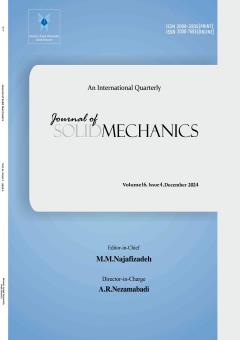This journal follows the Committee on Publication Ethics (COPE) Code of Conduct and Best Practice Guidelines for Journal Editors and the Code of Conduct for Journal Publishers.
The journal is committed to maintaining the highest level of integrity in the content published. In cases where we become aware of ethical issues, we are committed to investigating and taking necessary action to maintain the integrity of the literature and ensure the safety of research participants. The following points are only intended to give a broad overview and are not exhaustive.
Plagiarism Policy
All submitted papers are checked by iThenticate plagiarism checker software. Authors should always take great care to distinguish their own ideas and knowledge from information derived from sources. The term "sources" includes not only primary and secondary material published in print or online, but also information and opinions gained directly from other people. Proper acknowledgements to other works must be given (this includes material that is closely copied (near verbatim), summarized and/or paraphrased), quotation marks are used for verbatim copying of material, and permissions are secured for material that is copyrighted.
If there is a suspicion of misconduct, the journal will carry out an investigation. If, after investigation, the allegation seems to raise valid concerns, the accused author(s) will be contacted and given an opportunity to address the issue. If misconduct has been established beyond reasonable doubt, this may result in the Editor-in-Chief's implementation of several measures including, but not limited to:
1) If the article is still under consideration, it may be rejected and returned to the author and the author's institution may be informed.
2) If a case of plagiarism comes to light after a paper is published in this journal, the journal will conduct a preliminary investigation. If plagiarism is found, the journal will contact the author's institute and funding agencies. A determination of misconduct will lead the journal to run a statement, bidirectionally linked online to and from the original paper, to note the plagiarism and to provide a reference to the plagiarised material. The paper containing the plagiarism will also be obviously marked on each page of the PDF. Depending on the extent of the plagiarism, the paper may also be formally retracted.
If you come across a case of plagiarism in this journal please inform our editorial office and give them title of manuscripts, name of authors, volume number, issue number, year of publication and any other information you may have. The editorial office will handle the cases immediately.
Conflict of Interest
When an investigator, author, editor, or reviewer has a financial/personal interest or belief that could affect his/her objectivity, or inappropriately influence his/her actions, a potential conflict of interest exists. Such relationships are also known as dual commitments, competing interests, or competing loyalties. To ensure objectivity and transparency in research and to ensure that accepted principles of ethical and professional conduct have been followed, authors should include information regarding sources of funding and potential conflicts of interest (financial or non-financial).
- Research grants from funding agencies (please give the research funder and the grant number)
- Honoraria for speaking at symposia
- Financial support for attending symposia
- Financial support for educational programs
- Employment or consultation
- Support from a project sponsor
- Position on advisory board or board of directors or other type of management relationships
- Multiple affiliations
- Financial relationships, for example equity ownership or investment interest
- Intellectual property rights (e.g. patents, copyrights and royalties from such rights)
- Holdings of spouse and/or children that may have financial interest in the work
The corresponding author will include a summary statement in the text of the manuscript in a separate section before the reference list, that reflects what is recorded in the potential conflict of interest disclosure form(s). See below examples of disclosures:
Funding: This study was funded by X (grant number X).
Conflict of Interest: Author A has received research grants from Company A. Author B has received a speaker honorarium from Company X and owns stock in Company Y. Author C is a member of committee Z. If no conflict exists, the authors should state: Conflict of Interest: The authors declare that they have no conflict of interest.



